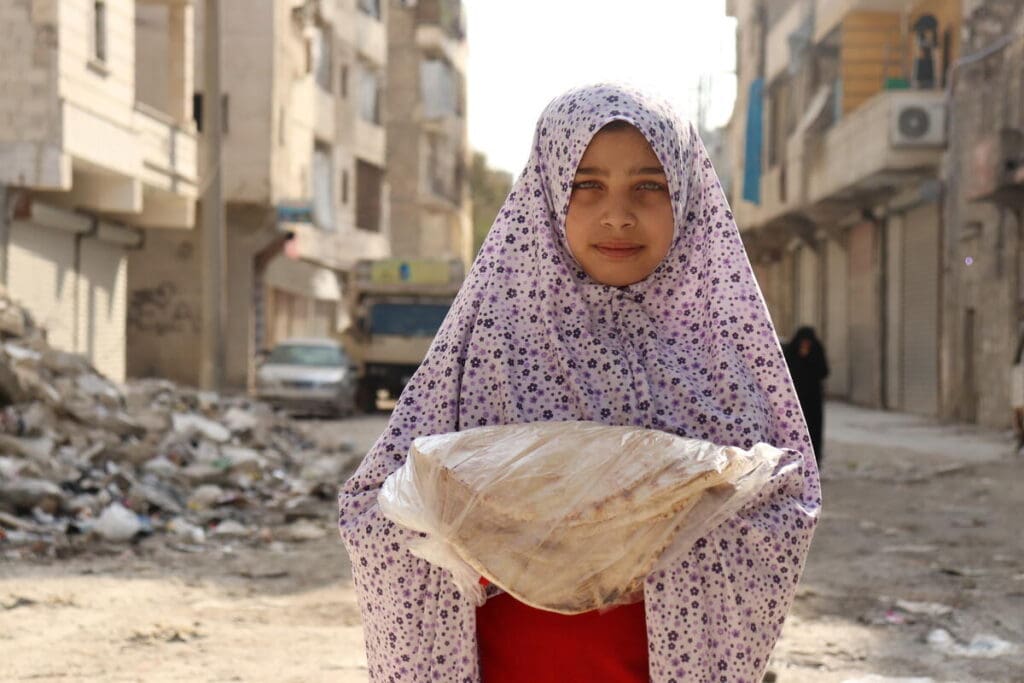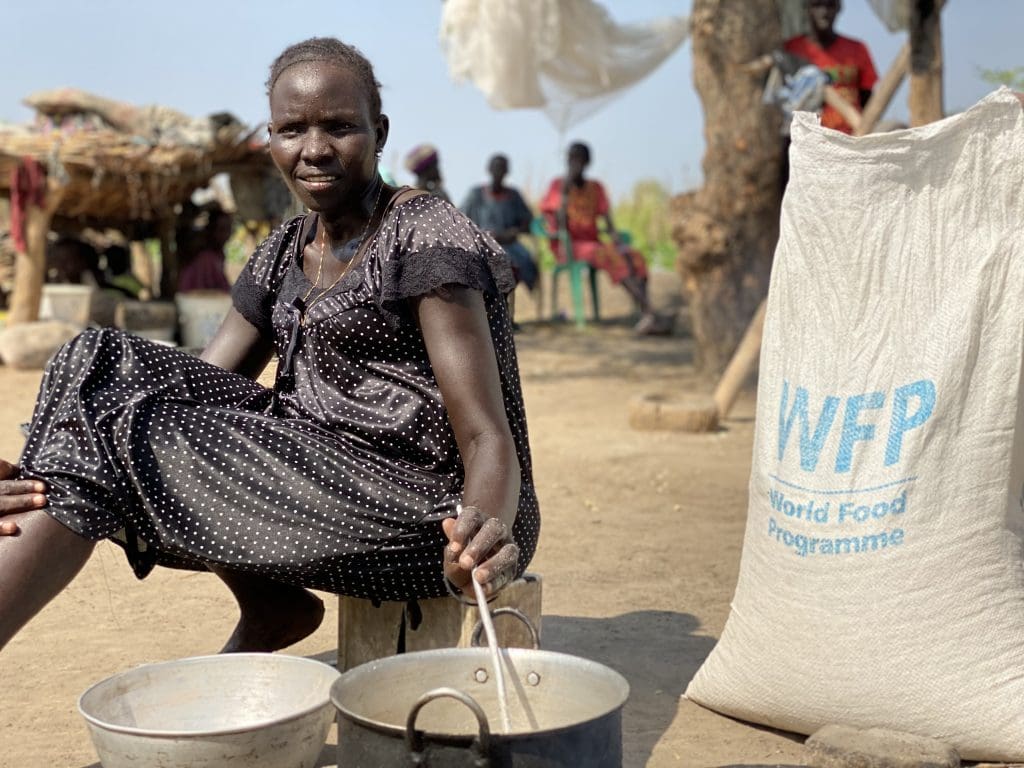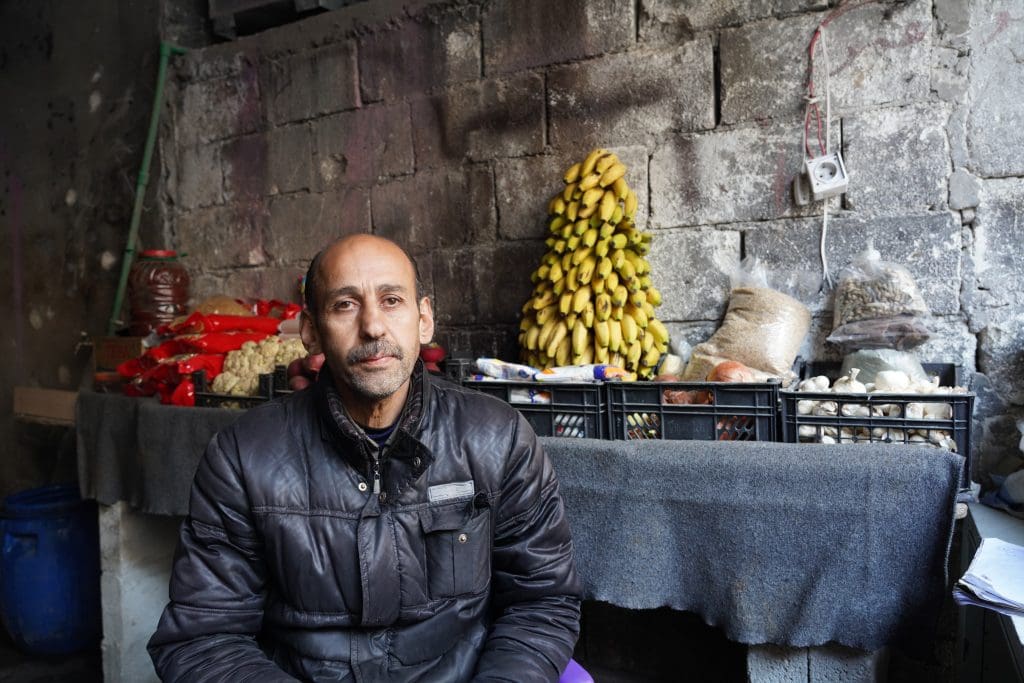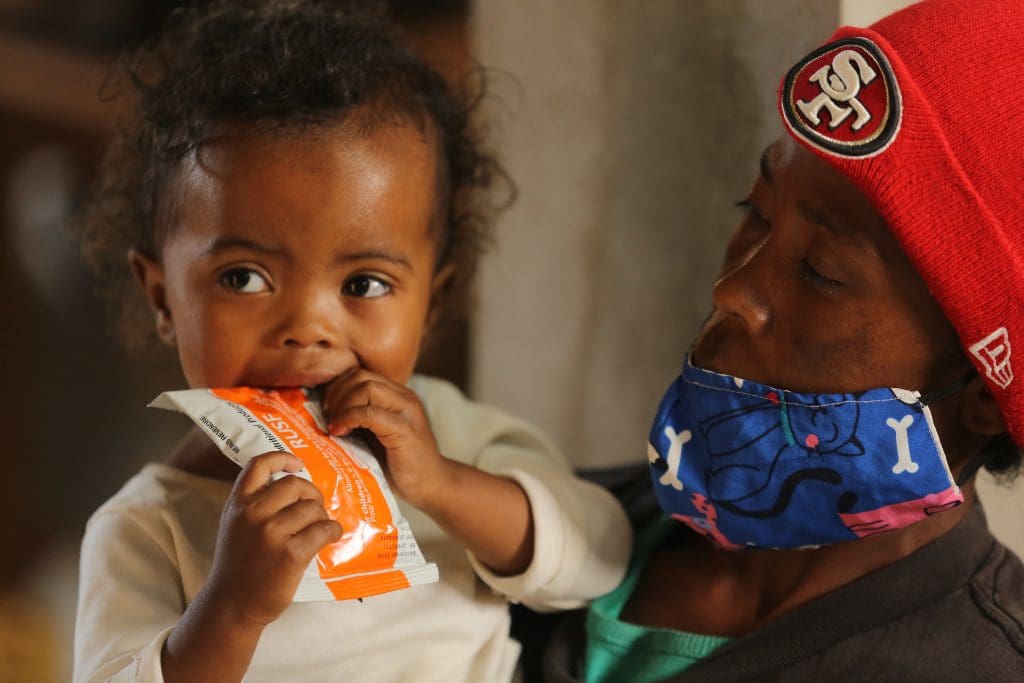After One Year of COVID-19, What Lessons Have We Learned About Hunger?

It’s been just over a year since we were first warned that “COVID-19 could lead to a food security crisis if proper measures are not taken.” At the time, only a dozen countries in sub-Saharan Africa had confirmed cases of the virus. The worst had yet to play out. Fast forward to today and the world has passed two grim milestones:
- 100 million COVID-19 cases, and
- 2 million deaths
At the same time, at least four countries around the world are on the brink of famine.
Nearly a year ago, the United Nations World Food Programme (WFP) Executive Director David Beasley stood before the U.N. Security Council and warned of “famines of biblical proportion.” This month, he returned to that same body and announced that “we are once again sliding toward the brink of the abyss,” and reported that another terrible milestone had been achieved—272 million people are now facing crisis levels of hunger.
Make no mistake: COVID-19 has made the hungry hungrier and the poor poorer. But how? What lessons have we learned? What’s the state of food security one year later, particularly in the world’s hungriest places?
What You Need to Know
- Lockdown measures disproportionately affected small-scale farmers who distribute food through informal markets and complex networks of small businesses.
- These disruptions restricted food supplies and caused food prices to spike.
- There was no global food shortage due to COVID-19. The current hunger crisis is about food access, not availability.
- Pandemic-related job and income losses mean millions of people can no longer afford an adequate diet.

Nyal Chol Liech Muon (30) prepares a meal after collecting food at WFP’s distribution point in Bilkey Payam, South Sudan where most of the recently displaced families escaping violence and flooding have sought shelter. South Sudan is facing it’s highest levels of food insecurity since the country declared independence ten years ago.
Plenty of Food While Millions Go Hungry
Here in the U.S., empty supermarket shelves and hoarding are some of the most enduring images of the pandemic. Hence, many of us assume that food shortages have caused the increased global hunger levels we are seeing. But generally speaking, that has not been the case.
In fact, global food shortages and widespread food price hikes have not accompanied COVID-19. Moreover, estimates show that a new global record for grain production was hit in 2020—some 2.7 billion tons of rice, wheat, corn and barley. However, food production and trade flows don’t always tell the story of a family’s food security. If we looked at production and supply alone, the global food system’s response to COVID-19 could be seen as a tremendous success even though we know millions of people have been left hungry by the virus.
The Broken Link: Local Markets and Supply Chains Disrupted by COVID-19
The rise in hunger has happened largely because of food supply chain interruptions in low- and middle-income countries. Remember: Only 20 percent of food supply chains in Africa and South Asia operate the way they do in the United States, with commercial farmers providing food through sophisticated channels destined for your local, modern supermarkets.
In many countries, food is provided by small-scale farmers moving food through informal markets and a complex network of small business. Quarantines, travel restrictions and other lockdown measures disproportionally affected these small-scale actors—sellers, traders, shop owners and the like. These disruptions restricted supplies and caused food prices to spike, making meals unaffordable for millions of people who live hand-to-mouth.

“Sometimes people even buy pieces of a vegetable because they can’t afford a whole one,” said Abo Mohammed who owns a grocery store in Aleppo, Syria.
A Crisis of Food Access, Not Availability
COVID-19 is, overwhelmingly, a crisis of food access, not availability. In other words, there is food on the shelves, families simply can’t get to the market or afford it once they’re there.
In what some call “the Great Lockdown,” approximately half of the world is still practicing some form of social distancing, which has resulted in the loss of roughly 500 million full-time jobs, especially for those who work in the informal economy.
These income losses have a huge impact on poor families in low- and middle-income countries, who spend almost 50 percent of their income on food. (In the U.S. it’s only about 10 percent.) In places affected by conflict, food costs far exceed daily incomes, even for a single meal. That means income losses in these places translate directly into hunger.
Urban Workers and Schoolchildren Are the New Faces of Hunger
COVID-19 has created a new group of hungry people: city dwellers in low- and middle-income countries. Global hunger has long been an overwhelmingly rural phenomenon, but the pandemic has disproportionately impacted cities in developing countries. Urban areas are home to precisely the sorts of informal markets and workers impacted by the pandemic: the taxi drivers, hotel clerks and airport staff affected by the disappearance of tourism.
The pandemic has also been especially cruel to children. Since it began, more than 39 billion school meals have been missed, leaving almost 400 million students without this critical lifeline. Experts estimated that an additional 6 to 7 million children under the age of five are likely to suffer from acute malnourishment (aka “wasting”) as a result. Malnourishment, in turn, leaves the body more susceptible to infection and disease and may even reduce vaccine efficacy.

Nambinintsoa with her mother Sahondra at a WFP-supported nutrition center. “‘’During the lockdown, travel wasn’t allowed and my husband stopped working,” Sahondra said. “COVID-19 has changed a lot of things in our life.”
What the Year Ahead Looks Like
The year ahead may make or break our goal of ending hunger in all its forms by 2030 (see all 17 Sustainable Development Goals here) — particularly since hunger was already on the rise in the years leading up to the COVID-19 crisis. In fact, the U.N. World Food Programme has warned that 2021 could see the worst humanitarian crises since the U.N. was founded over 75 years ago. Here is what appears to be true about COVID-19 and hunger: the worst food system impacts of the pandemic in developing countries were simply deferred, not avoided.
The U.N. World Food Programme is the world’s largest hunger-fighting agency and is uniquely qualified to tackle these challenges. But we cannot do it without the support of the American people. We hope you’ll join our cause and donate here to help us continue our lifesaving work.
Chase Sova is senior director of public policy and thought leadership at World Food Program USA. He is also a non-resident senior associate with the Global Food Security Program at the Center for Strategic and International Studies (CSIS) in Washington, D.C. An earlier version of this article originally appeared on the CSIS Commentary site.




